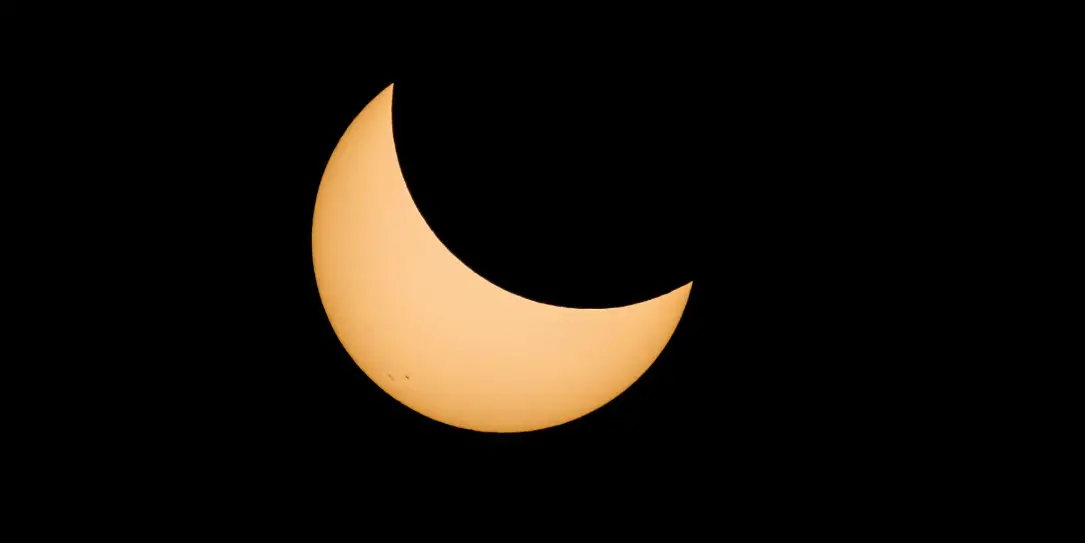Photography is a wonderful and oftentimes rewarding job/hobby anyone can do. With this year’s solar eclipse, there were plenty of shutterbugs traveling to the path of totality to take their best shots. My father-in-law (Duane Huie) was one of them. I have a lot of respect for Duane, not only as a father, grandfather, and honest hard working man but also as a photographer. Some of my best memories have been out in wild Montana, capturing photos alongside him. His passion for wildlife photography has taught me a lot about my own photographic journey.
So when he asked me if I’d be interested in an article on his take of photographing the solar eclipse, I was more than happy to entertain his words. What follows are his thoughts on how he safely captured photos of the 2017 solar eclipse. Perhaps his experience could help you with the next solar event.
Capturing Photos Of The Solar Eclipse
By: Duane Huie
Photographing the total solar eclipse of August 21, 2017, was an unforgettable experience. Just watching it through certified glasses was spectacular, but viewing it through a telephoto lens made it even more amazing. Having the right equipment is the key to getting quality pictures of a solar event. The basic items required are a DSLR or mirrorless camera with a telephoto or zoom lens of at least 200 mm focal length (more is better) with a hood, a neutral density 16 stop filter, a steady tripod that can be smoothly adjusted, and a cable release to operate the shutter. These are the minimal necessities to capture reasonably good images of an eclipse.
I used a Canon 7D Mark II camera with a 100-400 mm L IS II lens, which has a crop factor of 1.6, and a version III 1.4 converter. This set-up was equivalent to shooting with an 883 mm lens on a full-frame (35 mm) camera. Full frame cameras are typically a little sharper than crop sensor cameras, and teleconverters tend to reduce sharpness slightly. However, I was glad for the extra magnification provided by the crop sensor camera and the teleconverter. If these had any adverse effect on image quality, it was negligible.
With a 16 stop ND filter, I manually focused by looking directly through the camera. Another technique is to use live view. But if you do so, you will need to work under a hood of some sort to darken the LCD screen. You might also consider using a diopter placed over the screen to get a larger image for focusing. Some cameras feature an articulating LCD screen for easier viewing. It was less complicated for me to look through the eyepiece and focus manually.

Before the eclipse, I practiced taking shots of the sun. Doing so helped me to improve my technique and figure out the settings ahead of time. A 16 stop filter blocks nearly all the light. So in order to find the sun, set the camera on a high ISO (6400), the aperture to f/8, and the shutter speed to 1000th of a second. Decrease the shutter speed until you see the sun, then focus and lower the ISO until you reach 100. My settings for shooting the eclipse were ISO 100 at f/8. I bracketed by taking shots at each shutter speed between 1/500 and 1/3200 of a second. My best exposures were taken in the 1/500 to 1/800 of a second range. It is best to practice and determine what works best for you.
As the moon advances across the sun, less light is emitted – which means you might need to slow your shutter speed even more. When the eclipse reaches totality, you will have to remove the filter and adjust your shutter speed – then continue shooting. Don’t forget to bracket! As the sun begins to emerge, you must replace the filter and return to your previous settings.
Photographing a solar eclipse is a rewarding experience, but don’t do it at the expense of your equipment or eyes. Be sure to use an ND16 filter and wear approved glasses when looking at the sun. Do your research and make your travel plans well in advance. Practice using your equipment well beforehand. Then go and enjoy this amazing event. Hopefully, you will come away with some spectacular shots.
Duane Huie is a photographer who captures the wildlife essence of his home state Montana. Duane is also a father, grandfather, and the quintessential hard-working man. You can find his work on Facebook.
Editors Note: We understand there are many ways to capture a good image of a solar eclipse. There were many using smartphones and other non-DSLR cameras. The author’s opinions and methods are based on the gear at his disposal. If you know other great ways to capture an eclipse using other gear and methods, feel free to share in the comments below!
Last Updated on April 4, 2024.











Comments are closed.